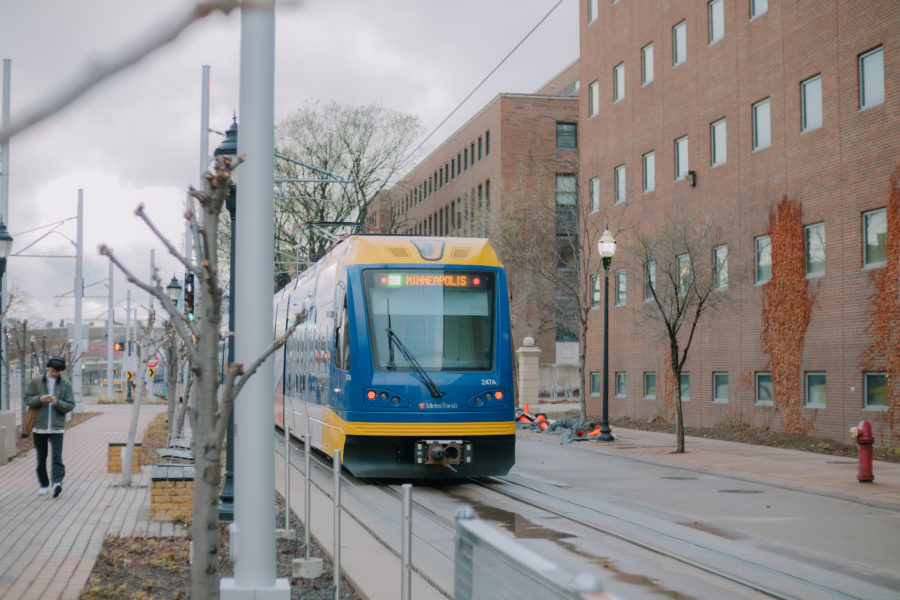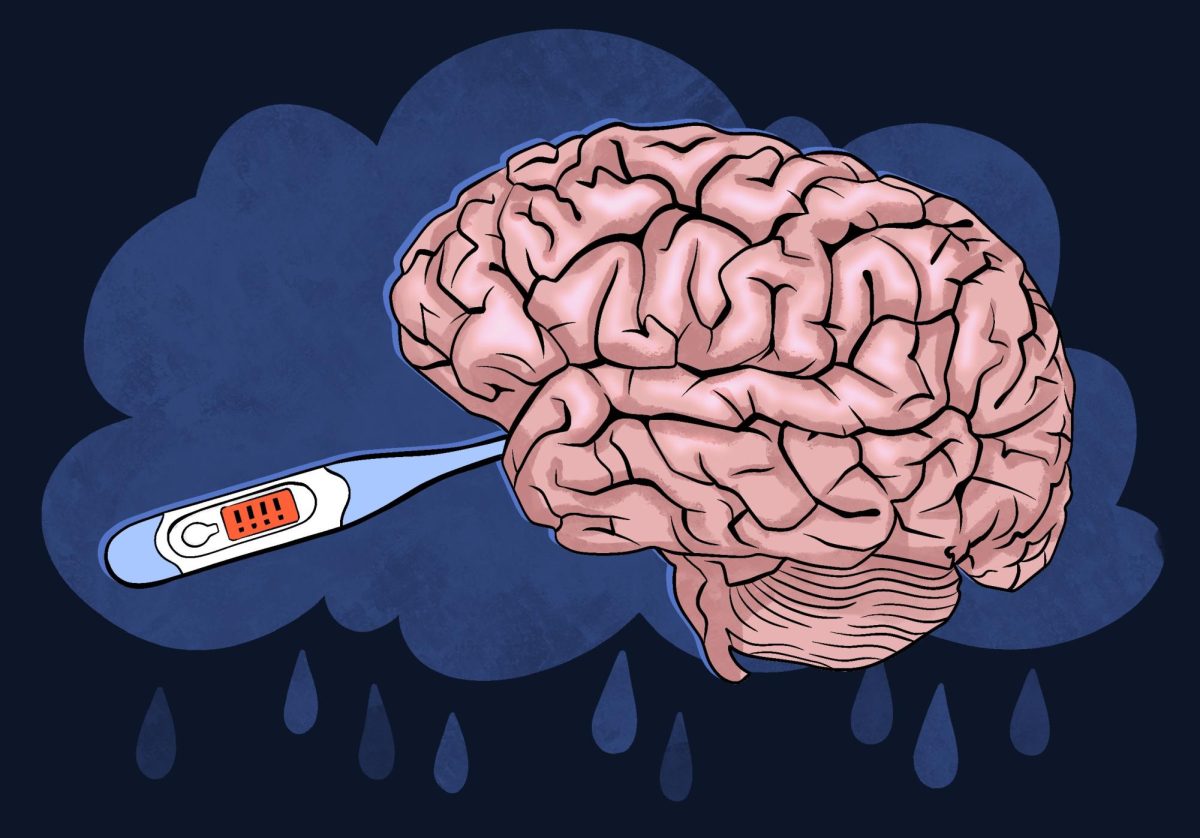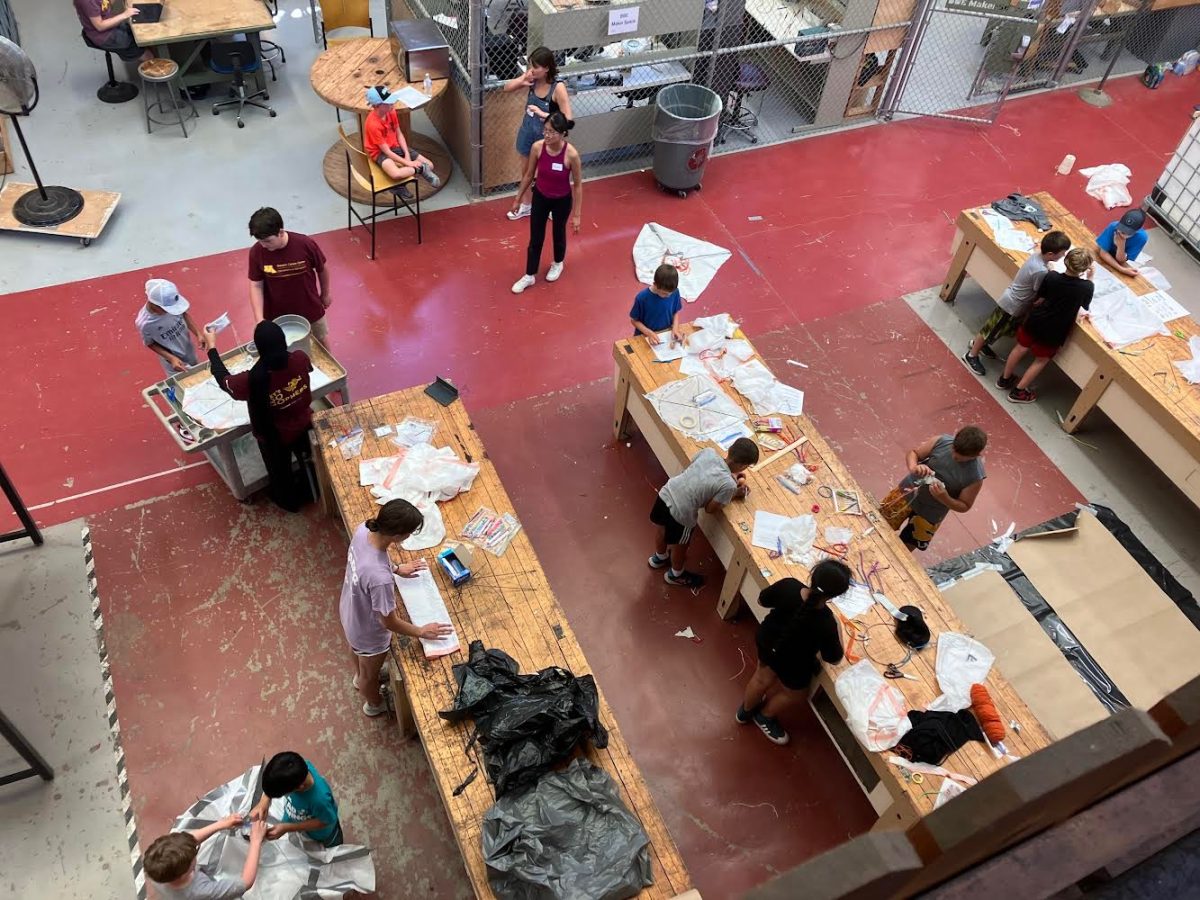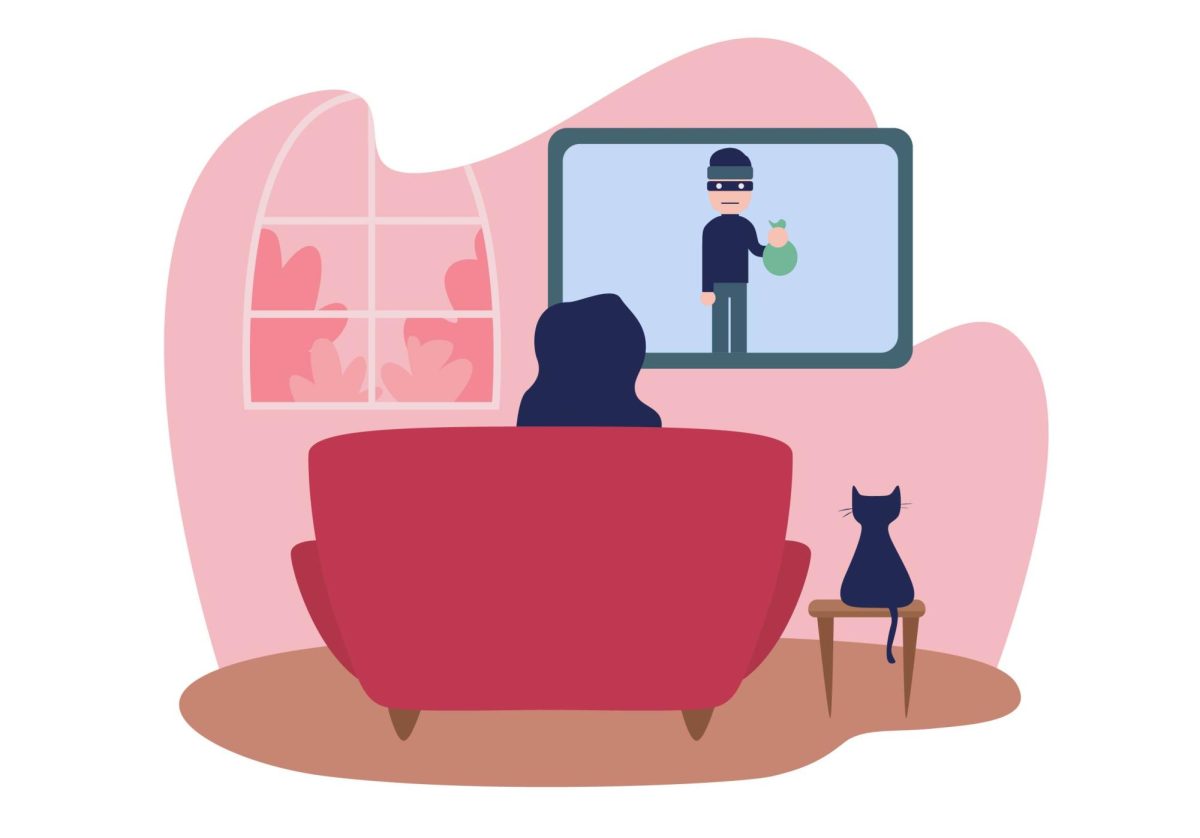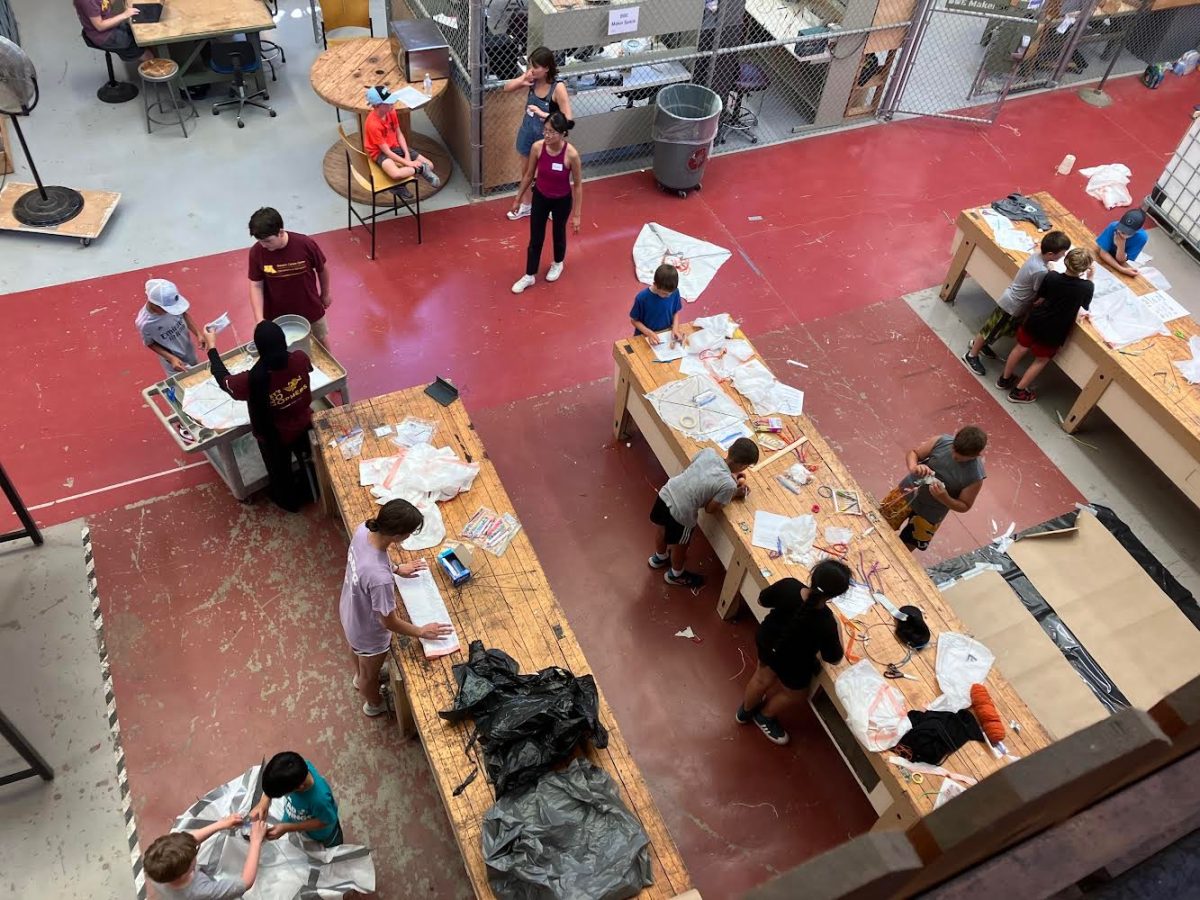Many University of Minnesota students think safety on the Minneapolis-St. Paul light rail should be improved but are skeptical about effective methods to improve these conditions.
In January, the Metropolitan Council announced that crime had increased on buses and trains in 2021-2022 throughout the Twin Cities.
In March, Minnesota lawmakers proposed a bill called the Transit Service Intervention Project. The project would involve placing social workers on the light rail’s Green and Blue lines over the span of three months to provide mental health support as well as support for unhoused individuals.
The Metro Green Line runs right through the University with three stations that help students get around campus. Additionally, University students have access to more than two dozen bus routes through the U-Pass.
Students overall have had a “good” experience but know crime exists
Some students, like second-year Sydney Chen, take the light rail multiple times each week. Chen said she sometimes takes the train further into Minneapolis or St. Paul to go to the Asian markets in those areas.
Chen said her experience overall has been good on the light rail, but she continues to be cautious of her surroundings.
“If it’s like the middle of the day, it’s probably fine, but if it’s a little bit later, then I probably don’t want to take it,” Chen said.
First-year student Mick Fitzgibbons has also had good experiences with the light rail so far but does not take the light rail as often.
“It’s been fine.” Fitzgibbons said. “I mean, I’ve definitely seen a few characters on the light rail, but nothing where I felt ‘I’m in danger.’ Usually there’s a lot of students and there’s not really random people on the light rail,” Fitzgibbons said.
Second-year Mei Abraham only takes the light rail when the weather is too bad to walk to class but has heard about the safety and crime issues on the light rail, which she said makes her nervous to use it sometimes.
When Abraham does take the light rail, she takes the train in the early morning. The light rail stations and cars are more empty at the time, which is when she has to take the light rail to get to her first class of the day, according to Abraham. She said she feels more timid about being ont he light rail when there are less people.
The light rail is not the only way students get to class. Other students, such as first-year Shania Mendoza-Smith, take the public bus everyday to get to class.
“It’s been a pretty good experience overall,” Mendoza-Smith said. “It’s pretty convenient and affordable.”
Mendoza-Smith said she has not seen any conflicts on the bus but is aware they happen.
“So long as you keep to yourself, there’s usually not any conflicts,” Mendoza-Smith said.
Students are unsure if there is an effective solution
While students know there are issues with safety and crime on the light rail, many said they do not know what the city could do to resolve these issues.
Chen said she prefers having police officers on the light rail and their presence makes her feel better about taking it off campus, but she does not know if it is an effective solution.
“I don’t really know what all is practical,” Chen said. “It’s a city and there are just unsafe things everywhere.”
Other students, like Abraham, agree and do not really know what Metro Transit or city officials could do to improve conditions on the light rail.
“I feel like there’s not a lot that you can do,” Abraham said. “There’s just not a lot you can do when it comes to public transit.”
What Metro Transit is doing to stop crime
According to the Clery Act, all of the light rail stops on campus are under Metro Transit jurisdiction. The Clery Act requires the University to report and make information about crime on campus available.
Metro Transit wants to provide students and other riders with a comfortable ride on the light rail, Metro Transit Police Chief Ernest Morales III said.
“We have to provide a safe haven for them, a safe passage,” Morales said. “It should be a comfortable ride.”
One of the many ways Metro Transit is trying to improve safety on the light rail is by recruiting more police officers, according to Morales.
Morales said he has met with University of Minnesota Police Department Chief Matt Clark to communicate and coordinate safety measures with one another.
“The students utilize the system to go to sporting events, get off campus and enjoy town,” Morales said. “It’s just a matter of getting them to where they need to be in a safe manner.”
In addition, Metro Transit has been working to make resources and services available to those struggling with addiction or homelessness on the light rail, according to Morales.
“We can’t force anyone into services, but we are definitely making the resources available to them if needed,” Morales said.
Morales, who joined the Metro Transit Police Department as chief of police earlier this year, wants to have officers at the end of each light rail line to clear out the trains so maintenance can clean them. He said he also wants to have officers posted to check fairs before sending the train on its way.
“It’s something that we used to do that we moved away from with COVID and other things that took place,” Morales said.
In addition to these initiatives, Metro Transit began the Real Time Information Center, where staff monitor transit cameras at all times and can react to situations in real time.
There is also the Text For Safety program, which allows riders to text the number 612-900-0411 if they do not feel safe enough to call 911.
According to Morales, safety is in numbers, and the more people who utilize the light rail, the safer it can become. However, it is always good to be aware of your surroundings, Morales said.
“Regardless of where you go around the world, situational awareness is always important,” Morales said.


